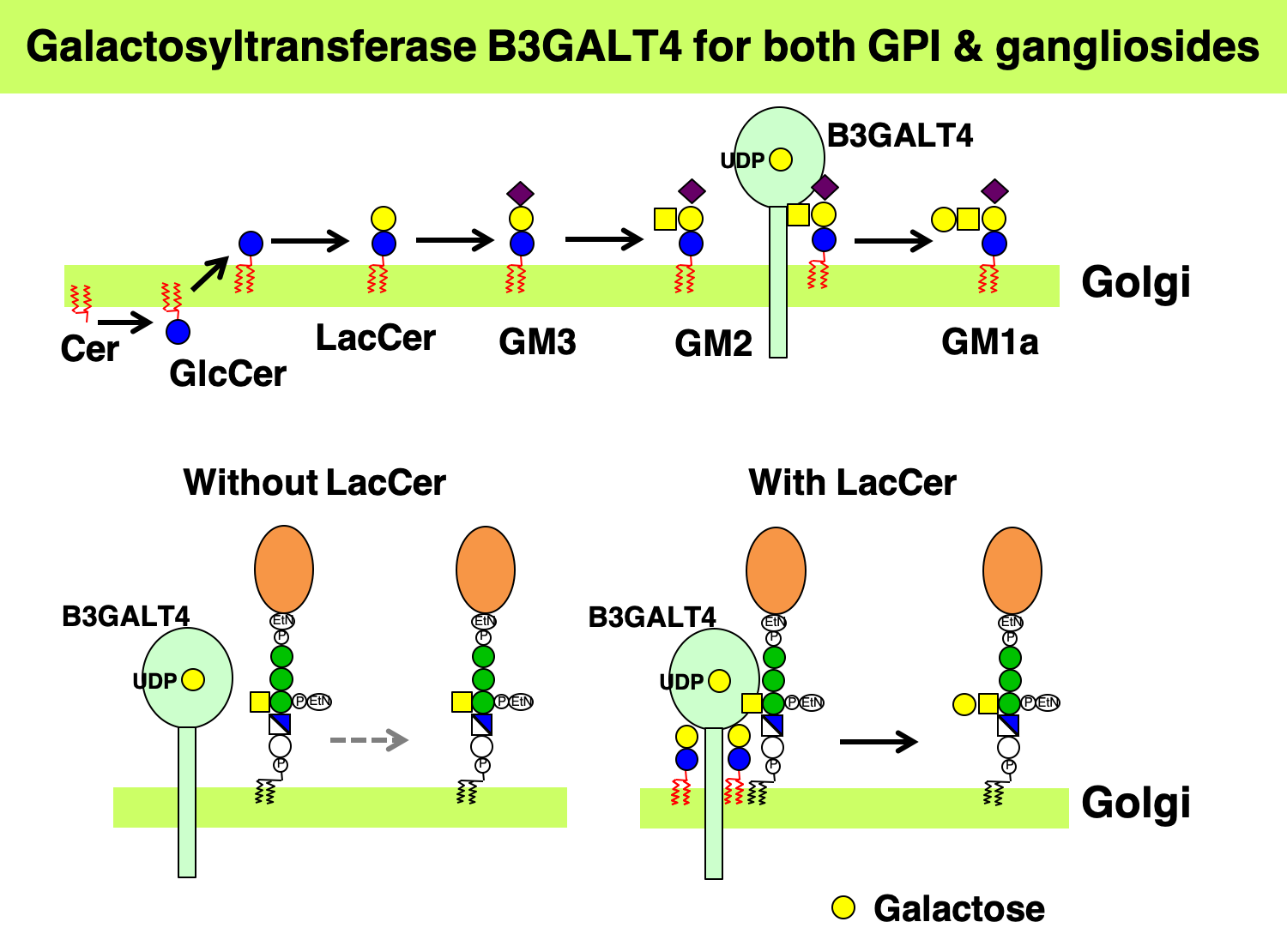Cross-talks of glycosylphosphatidylinositol biosynthesis with glycosphingolipid biosynthesis and ER-associated degradation (Kinoshita Lab, in Nat. Commun.)
Glycosylphosphatidylinositol (GPI) is a glycolipid for post-translational modification of many cell-surface proteins in eukaryotic cells. The structure of the core backbone of GPI is conserved whereas the structural variation of GPI anchors is introduced by side-chain modifications. In some mammalian GPI-APs, the N-acetylgalactosamine side-chain linked to the first mannose is further modified with galactose by an unknown galactosyltransferase (GPI-Gal-T). We performed genome-scale CRISPR-Cas9 knockout screening for GPI-Gal-T and found that B3GALT4, known as GM1 synthase, is GPI-Gal-T. We also demonstrated the requirement of lactosylceramide for efficient galactosylation of GPI side chain. In addition, we show that GPI biosynthesis in the endoplasmic reticulum (ER) is regulated by ER-associated degradation system to prevent GPI accumulation. Thus, our work demonstrates cross-talks of GPI biosynthesis with glycosphingolipid biosynthesis and the ER quality control system.
This article is published in Nature Communications, in Feb 13, 2020.
Title: Cross-talks of glycosylphosphatidylinositol biosynthesis with glycosphingolipid biosynthesis and ER-associated degradation
Authors: Yicheng Wang, Yusuke Maeda, Yi-Shi Liu, Yoko Takada, Akinori Ninomiya, Tetsuya Hirata, Morihisa Fujita, Yoshiko Murakami & Taroh Kinoshita
Links
- Home
- Achievement
- Research Activities
- Cross-talks of glycosylphosphatidylinositol biosynthesis with glycosphingolipid biosynthesis and ER-associated degradation (Kinoshita Lab, in Nat. Commun.)








